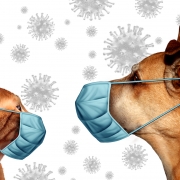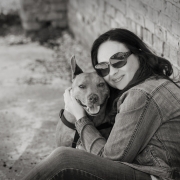Veterinarians: Protecting Human & Animal Health Through History
By MEGAN TREMELLING, DVM, LVS
Ever since humans realized the value of animals, we have wanted to provide some kind of medical care to keep them healthy. And for as long as medical care has existed, people have realized that what works for humans does not necessarily work for animals. However, the importance of veterinary medicine to human health has always been clear.
Veterinary medicine is as old as written history, with Sumerian texts making reference to doctors who treated oxen and donkeys. At the time, illness was believed to be due to malign spiritual forces, and seers and priests were considered to have a role to play in protecting the health of both humans and animals. However, clinical practitioners had developed a tradition of practical medicine in spite of them.
One of the earliest veterinarians, in the sense of a healer who treats animals but not humans, was Shalihotra, son of Hayagosha, said to have lived in Uttar Pradesh, modern India, sometime in the 3rd millennium BCE. The Sanskrit work credited to him is a large treatise on the care and husbandry of horses, including notes on the anatomy of elephants. He was one of many writers in the Indian tradition that discussed veterinary science and may have been trained by the same teachers who laid the foundations for Ayurvedic medicine in humans.
Legend has it that the Chinese veterinarian Zhao Fu was practicing on horses during the Western Zhou dynasty in the 10th century BCE. Unfortunately, he was performing bloodletting procedures that have not stood the test of time. Textbooks of traditional Chinese veterinary medicine were produced regularly and discussed the use of acupuncture and herbal medicine.
By the time of the Roman Empire, veterinarians were recognized as professionals whose work was important enough to the state that they were exempted from public duties, like architects and physicians. The most important veterinary work at that time was the care of horses because they were important to the Roman military, to the post and to the huge horseracing industry.
Modern Western veterinary medicine is usually dated to 1761 when Claude Bourgelat founded the first European veterinary college in Lyon, France. The idea of improving animal care by training practitioners with rational scientific principles soon caught on. Veterinary schools began opening around the world. Daniel Salmon who spent his career in public health and identified the bacterium Salmonella earned the first DVM degree granted in the United States in 1872.
Working in clinical practice or public health, as many veterinarians do, does not lend itself to fame and fortune. Many of the most prominent veterinarians are people whose names are not familiar to the average person, although their work has freed us from diseases that have plagued humans since antiquity. In 1892, Leonard Pearson introduced tuberculin testing to the American dairy industry. In the 1920s, Swiss-born veterinarian Karl Friedrich Meyer developed safe canning procedures for food, saving many from botulism. French veterinarian Camille Guérin worked with physician Albert Calmette to develop one of the first vaccinations against tuberculosis for humans in 1921.
In recent years, American veterinarian James Thomson developed the first human embryonic stem cell line. Australian veterinarian Peter C. Doherty won a Nobel Prize for his research in immunology. Two veterinarians have gone into space, including Martin J. Fettman, a veterinary clinical pathologist who flew on a NASA mission in 1993, and Richard M. Linnehan, who undertook no less than 4 space flights from 1996 to 2008.
Many veterinarians have written about their experience. Most famous of course was Alf Wight, who wrote under the pen name James Herriot. His endearing stories of mixed animal practice in the Yorkshire Dales in the 1940s, published in a series including “All Creatures Great and Small,” inspired innumerable young people to pursue veterinary medicine (your correspondent included) and were made into 2 films and a television series. Louis J. Camuti and Baxter Black are two other veterinarians who have charmed audiences with their writing.
Of course, there are many veterinarians who have turned their talents from practice to less clinical fields. They have served in the U.S. Senate and the Cabinet. The first President of the Gambia was a veterinarian, Dawda Jawara. John Boyd Dunlop, who developed the first practical pneumatic tire in 1887, was a veterinarian. Peter Ostrum, who as a child played Charlie in the original Willie Wonka and the Chocolate Factory movie, is now a large animal veterinarian in New York. Debbye Turner, who took time out from veterinary school to be Miss America in 1990, is a popular TV host and motivational speaker.
Finally, in case there remains any doubt that veterinarians have greatly contributed to the quality of life for humans as much as for animals, no review of famous veterinarians would be complete without a mention of Elmo Shropshire, famous for recording the immortal Christmas song, “Grandma Got Run Over By a Reindeer.”






